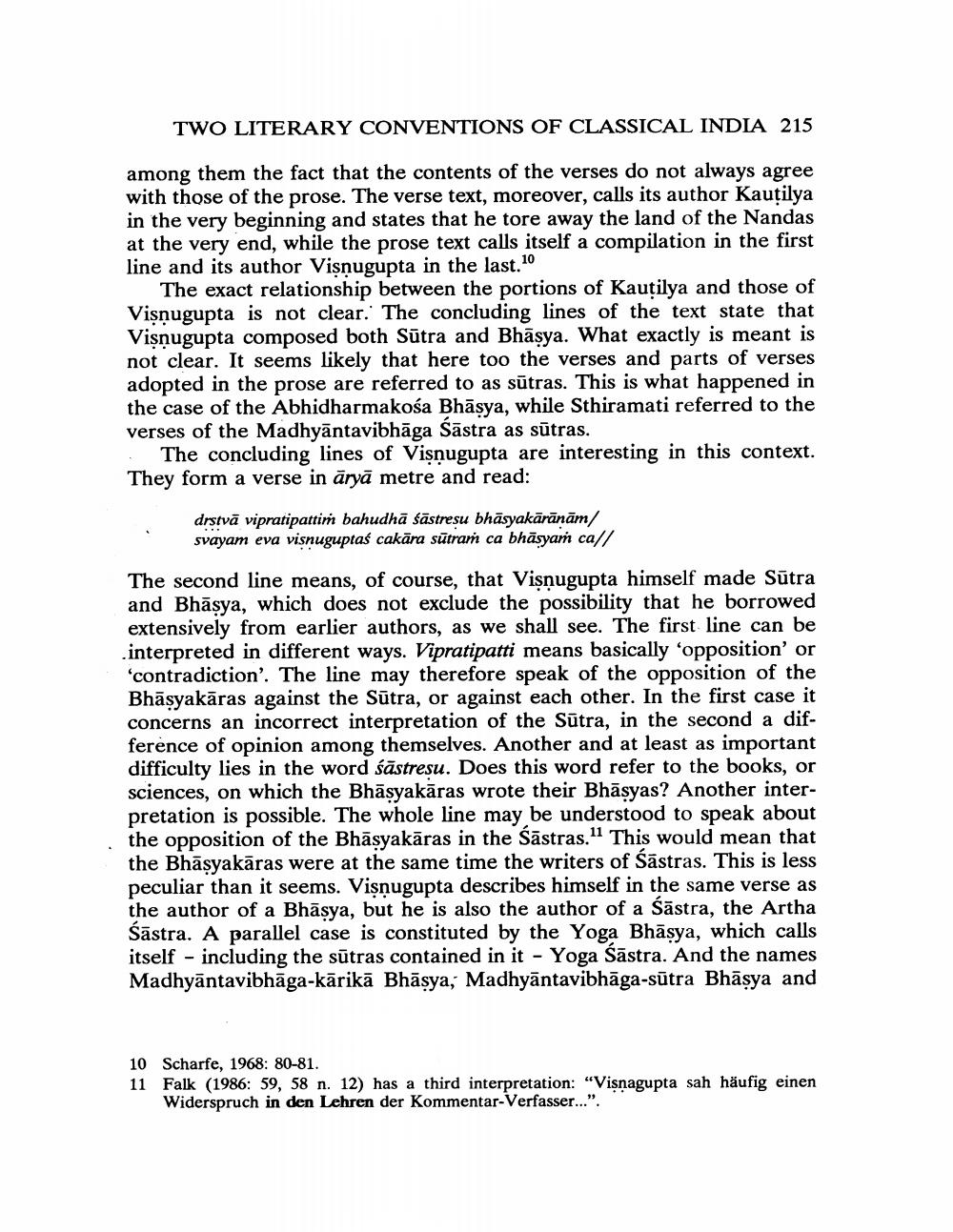________________
TWO LITERARY CONVENTIONS OF CLASSICAL INDIA 215
among them the fact that the contents of the verses do not always agree with those of the prose. The verse text, moreover, calls its author Kautilya in the very beginning and states that he tore away the land of the Nandas at the very end, while the prose text calls itself a compilation in the first line and its author Visnugupta in the last 10
The exact relationship between the portions of Kautilya and those of Visnugupta is not clear. The concluding lines of the text state that Visnugupta composed both Sūtra and Bhāsya. What exactly is meant is not clear. It seems likely that here too the verses and parts of verses adopted in the prose are referred to as sūtras. This is what happened in the case of the Abhidharmakośa Bhāsya, while Sthiramati referred to the verses of the Madhyāntavibhāga Šāstra as sūtras.
The concluding lines of Visnugupta are interesting in this context. They form a verse in āryā metre and read:
drstvā vipratipatti bahudhā śāstresu bhāsyakārānām/ svayam eva visnuguptaś cakāra sūtraṁ ca bhāsyaṁ ca//
The second line means, of course, that Visnugupta himself made Sūtra and Bhāşya, which does not exclude the possibility that he borrowed extensively from earlier authors, as we shall see. The first line can be interpreted in different ways. Vipratipatti means basically 'opposition' or 'contradiction'. The line may therefore speak of the opposition of the Bhāsyakāras against the Sūtra, or against each other. In the first case it concerns an incorrect interpretation of the Sūtra, in the second a difference of opinion among themselves. Another and at least as important difficulty lies in the word śāstresu. Does this word refer to the books, or sciences, on which the Bhāsyakāras wrote their Bhāsyas? Another interpretation is possible. The whole line may be understood to speak about the opposition of the Bhāsyakāras in the Šāstras." This would mean that the Bhāsyakāras were at the same time the writers of Šāstras. This is less peculiar than it seems. Visnugupta describes himself in the same verse as the author of a Bhāsya, but he is also the author of a Šāstra, the Artha Šāstra. A parallel case is constituted by the Yoga Bhāsya, which calls itself - including the sūtras contained in it - Yoga Šāstra. And the names Madhyāntavibhāga-kārikā Bhāsya, Madhyāntavibhāga-sūtra Bhāsya and
10 Scharfe, 1968: 80-81. 11 Falk (1986: 59, 58 n. 12) has a third interpretation: “Visnagupta sah häufig einen
Widerspruch in den Lehren der Kommentar-Verfasser...".




